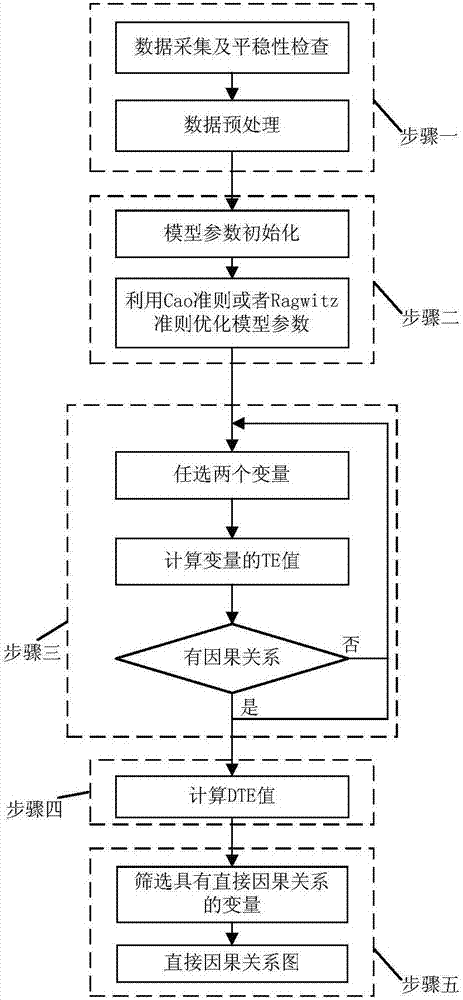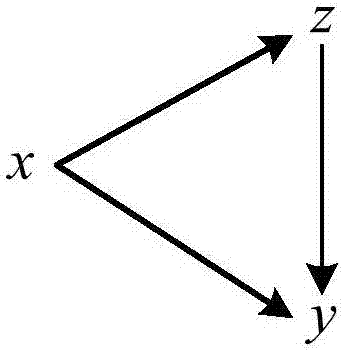Alarm source seeking method based on data driving
A data-driven, root-based technology, applied in the direction of electrical digital data processing, special data processing applications, instruments, etc., can solve the problems of high requirements for the number of modeling data, reduce major accidents, improve economic benefits, and apply strong effect
- Summary
- Abstract
- Description
- Claims
- Application Information
AI Technical Summary
Problems solved by technology
Method used
Image
Examples
Embodiment 1
[0050] combine figure 1 To illustrate this specific implementation mode, a data-driven method for finding the root cause of an alarm disclosed in Embodiment 1 of the present invention is carried out in the following steps:
[0051] Step 1: Detect the working data of the industrial system and obtain the observed variables, and store the d observed variables in the data matrix X. This embodiment uses the augmented Fuller test method to check the time stationarity of the data, and performs Preprocessing, preprocessing includes the use of filtering and other methods to process data noise; the working data includes parameters that reflect the operation of the system, such as temperature, pressure, water level, etc.;
[0052] Step 2: Initialize the model parameters, and use the Cao criterion to optimize the model parameters; the model refers to the model that establishes the causal relationship of variables, and the model parameters are some setting parameters needed to establish th...
Embodiment 2
[0105] Embodiment 2: This embodiment is different from the specific embodiment 1 in that: Step 2 adopts Ragwitz criterion to optimize parameters.
specific Embodiment
[0106] Specific embodiment: the method for finding the root cause of an alarm based on data-driven in this specific embodiment is used to simulate the causality of variables in a flue gas desulfurization process (flue gas desulfurization, FGD) of an oil company, and the specific steps are as follows;
[0107] Step 1, taking the FDG process as an example, select the liquid levels of the reaction tank, tank 1 and tank 2, and the flow rates of pumps 2 and 3 as variables, denoted as y 1 、y 2 、y 3 the y 4 、y 5 , collect 3544 sets of data, the data has time stationarity, and preprocess the data;
[0108] Step 2, model parameters are initialized, and the parameters are optimized using the Cao criterion;
[0109] Step 3, calculate the TE value and NTE value between variables, see Table 1;
[0110] Table 1
[0111]
[0112] Select 0.02 as the threshold, and the information flow path based on the standard transition entropy is as follows: Figure 5 shown;
[0113] Step 4, cal...
PUM
 Login to View More
Login to View More Abstract
Description
Claims
Application Information
 Login to View More
Login to View More - R&D
- Intellectual Property
- Life Sciences
- Materials
- Tech Scout
- Unparalleled Data Quality
- Higher Quality Content
- 60% Fewer Hallucinations
Browse by: Latest US Patents, China's latest patents, Technical Efficacy Thesaurus, Application Domain, Technology Topic, Popular Technical Reports.
© 2025 PatSnap. All rights reserved.Legal|Privacy policy|Modern Slavery Act Transparency Statement|Sitemap|About US| Contact US: help@patsnap.com



